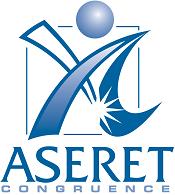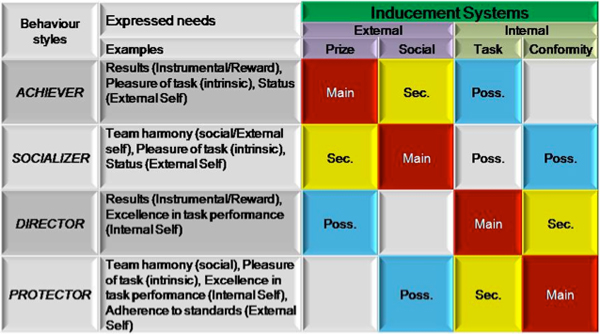 | ||||||||||||||||||||||||||
| ||||||||||||||||||||||||||
 | |||||||||||||||||||||||||||||||||||||||||||||||||||||
| News |  |
||||||||||||||||||||||||||||||||||||||||||||||||||||
ARTICLES  Roadmap to Success
Roadmap to SuccessOctober 2011 Philippe Glaude joins Ken Blanchard & Deepak Chopra in an upcoming release of: Roadmap to Success America's Top Intellectual Minds Map Out Successful Business Strategies ISBN-978-1-60013-633-7 How do busy people become successful? Insight Publishing is pleased to present Philippe Glaude, Ken Blanchard & Deepak Chopra in an exceptional compilation of resourceful people who will tell you how they learned how to be successful. They will share with you their secrets and reveal some remarkable insights on how to set goals in life and how to accomplish those goals. For more information and to order your copy of Roadmap to Success, contact us. August 2010 What motivates people? Motivation simply describes the motive to take action. Motivation is what drives people, it is what makes them want to work harder to resolve the conflict and find a solution. How many times have you felt that people had no desire (motivation) to solve a problem? As you recall one of those situations, what was behind that lack of motivation? What do you think would have happened if there was some motivation to resolve the issue? The following describes inducement systems that usually help put things in perspective. Motivators are very often linked to the dominant and secondary behaviour styles. For example, Socializers are typically motivated by harmony, social balance, friendship, reputation and the good of all. Therefore, solutions need to address these important aspects. A solution to a conflict that would have for consequence the loss of jobs, a negative impact on valued responsibilities, the need to manage significant emotional charges or anything that may create social pressures will likely be perceived as a bad solution and the conflict will remain. It may even get worse. Understanding motivations will also greatly impact your ability to engage your interlocutors in a true dialogue. Inducement SystemsThe following describe methods by which a person can help stimulate a motivation process in people. Individuals, whatever their role, DO NOT motivate, they put people in situations that will generate motivation coming from inside. Understanding the sources of motivation is the key elements in determining the optimal environment (feedback, reward, team, attitude, etc…) for stimulating behaviour. The following has been developed by Aseret after a thorough review of the literature on the subject of motivation as well as an excellent review article by Leonard, Beauvais and Scholl presented in 1995. There are four (4) Inducement Systems in the Self-based Concept
References to Behavior Styles are associated to the Congruent Styles™ Model developed by Aseret and used in the majority of our communication programs. Prize (reward) Inducement SystemThis inducement is related to a motivation that is instrumental to measurable results. It is therefore dependent on expectations that any increase in the quantity or quality of the task (competency) will generate a reward or something tangible. To resolve the conflict one may use increase in pay, retribution, or profit. Increased reputation is also a good way to go as well as the attribution of a more important role in a project. These PRIZES tend to induce motivation and generate increased task quality. This type of inducement will generally help in the self-motivation of Achievers and probably Socializers to a certain degree. However, both styles will react differently to the type of Prize or their meaning. An example of Prize inducement is a salary increase that is significant and superior to the average. The Achiever will feel proud to be in a separate class and being recognized for their efforts and results. The Achiever will directly relate results with salary increase and will be motivated to perform at the same level or even better. The increased money really translates into more power to potentially "show" their success via nicer clothes or physical possessions that are visible.The Socializer will be also motivated by the recognition but in a different way. The fact of being "better" than others is significant yet less important that the recognition itself. The association of the salary increase will be made with the impact that their work has had on their customers or teams rather than on pure results. The increased funds are likely to be used for fun things rather than visible icons. Social Inducement SystemTeams and functionality of the Team, group recognition, and social value of the role are inducing a behaviour leading to higher quality solutions. To resolve the conflict one may focus on the impact on the team or group, and the recognized value of the individual to induce motivation. This type of inducement will generally help in the self-motivation of Socializers and probably Achievers to a certain degree. However, just like it was described earlier, both styles will react differently to the type of Social inducement or their meaning. An example of Social inducement is a person of the year award. The Socializer will feel proud to be publicly rewarded and being recognized for their impact and attitude at work. The associated measurable results often linked to the nomination are often insignificant compared to the real motivator which is to be the BEST. If the reward was given not only on results but also, and more importantly, on the quality of their relationship with people and their leadership role in the team, the Award would have even more significance. In fact, many will inevitably translate the reward in that context rather that just numbers or business considerations. The Achiever will also be motivated by the recognition but in a different way. The fact of being "better" than others is more significant yet. The public recognition of being the best is the true motivator and numbers or tangible results obtained are, in this case, the key measurement for being the best. Task Inducement SystemThis relates to the Task itself, as it is perceived and accomplished, the pleasure it gives a person that completes it, the importance it holds, the value for a group, the increased competency it will generate, etc… To resolve the conflict one may focus their attention the accomplishment of a task in view of quality for themselves and others, the importance of the task and its quality for the team, the corporation or the project, etc… This type of inducement will generally help in the self-motivation of Directors but it may be applied to all 3 other styles depending on the circumstances and the person. However, in this case, each style will find a certain level of self-motivation in Task inducement. Just like it was described earlier, each style will react differently to the type of Task inducement or their meaning. An example of Task inducement is to give a special assignment to someone. The Directors, in their typical structured and controlled manner, will feel proud to complete a certain Task in the best possible way. The motivation is in the details, the value of the task in inducing results such as changes in policies or procedures. Directors will accomplish the Task after researching options and deciding, based on the available data, the best course of action. The motivation is to accomplish the Task in the best possible manner. The Protector will be motivated by the ability to complete the task according to their own drive for safety, recognized approach, and adherence to guidelines and to the corporate mandate. The task will likely be accomplished within all the parameters given to them. Socializer will find motivation in the fun part of the task. Details are likely to be set aside and make place for the glamour and visual quality of the task. Achievers will just be proud and motivated to accomplish the task rapidly, concisely and with measurable results. Conformity Inducement SystemMotivation is induced via the management perception (authority). It can be based on rules, guidelines and directions. It can be based on Team-work or simply associated to mutual respect. To resolve the conflict one may present tasks or behaviours in such a way that the other person will see value in resolving the situation as it pertains to stability, to the safety of the organization or the expectations bestowed upon them. This type of inducement will generally help in the self-motivation of Protectors. Directors may also respond well to Conformity. Again, both styles will react differently to the type of Standard inducement or their meaning. An example of Conformity inducement is recognition of the work done by one's boss or, even better, their boss' boss. The Protector will feel proud to be recognized for their expected impact and results, for the adherence to the corporate behaviour and measurement of overall excellence. The recognition need not be in the form of a reward. In fact, a confirmation of the persons' value in a team and the intent to keep them in post for a long time with all kinds of stabilizing benefits will be very significant. The Director will be motivated by the recognition also but in a different way. The fact of being recognized for the high quality of their work and knowledge according to certain measurable standard is the key to motivation. Inducement system guideThe associations in this table are based on most probable effectiveness and refer to "pure" behaviour pattern. i.e. a REAL Achiever will generally be motivated by fame, recognition and associated rewards. Therefore, Inducements such as Reward and Social are most likely. This is NOT an ABSOLUTE, it is simply a guide. 
Discovering what motivates people As you communicate effectively with the people you interact with, you ask questions and carefully, intently and strategically listen to the answer. Paying attention, creating a safe environment, understanding, empathy, unconditional positive regard and congruence will allow you to identify the needs and wants of individuals. Therefore you will understand what moves them and what inducement will generate self-motivation. January 2006 Gaining commitment Gaining commitment may be one of the most challenging activities or skill in the current business world. We think it is challenging mostly because people don't always understand what it actually means and how to get to it. Gaining commitment is too often associated to the "hard close" or "tying down" of clients. While a number of people would love to find a turn key solution, an easily applicable and reproducible recipe, gaining commitment depends on the quality of the interaction between individuals and groups. It is intimately dependant on the value that commitments will bring to the people making them. What is commitment? It is an agreement to take action between at least two parties (people or groups) based on the fulfillment of both parties needs. In other words, I for example, will agree to commit to an action if I believe that what I engage into will help me fulfill a need (or needs) I have and consequently bring value to my life or my work. What do we need to get to a commitment? When salespeople, managers, trainers and account executives are asked that question as the customer, this is basically what many of them say is needed for them be committed. (There has to be a clear knowledge/understanding that the planned actions are advantageous and will fulfill a need or bring added value. I will never commit to do something that does not bring a benefit.) So how is it that many sales managers and executives are asking their salespeople to "hard sell" or "close the deal"? Normally, a commitment is made between and by two parties. They both engage in doing something. We need to understand that if one party sees value (here the salesperson sees value in convincing a customer to purchase a product) but the other does not, a commitment to take action that satisfies both parties is very unlikely. In sales, it is often the case. It comes from the salesperson wanting something for themselves that has not yet a clear value for their counterpart, the customer. Does this mean that we sometimes cannot get to a commitment? Not at all. In fact, every interaction should lead to a commitment. We just need to be reasonable with our expectations and realize that a clear understanding of needs on both parts will enable both to commit to some action that will help both in moving toward a valuable solution. Let's review what needs to be done, and done with effectiveness, before we can get to a commitment. Key Components To get to a commitment one needs to:
Key Skills How to uncover needs
The following is an effective exercise to practice these skills. Either with specific case study/short scenarios or with an improvised topic of discussion, have people in groups of 3-4 engage into a discussion and try to find areas of agreement and then gain commitment. Example of improvised topics:
The concept of U&I,DO™ With Aseret's simple communication method that applies to any situation. Whether we sell, argue a case, discuss objections, ask questions, try to find solutions or gain commitment, this method works. Gaining commitment with U&I,DO™
Understand Who are you dealing with? What is their Behaviour style? What is important to them? What is their role in the current environment? What are their responsibilities? What do they care for or believe in? What are the pressures or limitations or realities they face in the current environment? Initiate the interaction stating the objective, the reason to discuss and the potential end value of this time and effort investment. Identify Verify your understanding on their situation and genuinely demonstrate you desire to understand their situation and needs. Ask questions that will let them express their needs, situation, philosophies and beliefs. Open up to what they have to express and always verify that you do indeed understand. If things are not clear, clarify before moving forward. Disclose Help your counterpart in understanding your needs. Express your ideas on what you can help with (your understanding, your products, your organization, your services, your experience, your knowledge, etc¡) the satisfaction of their needs (solution). Provide elements that help them understand and demonstrate the possibility for commonly valuable actions. Organize Verify how the needs are understood on both sides. Establish commonalities, agreements, and concomitant point of views on needs, objectives, goals or necessary actions. Always address the most important needs first (AAA needs) Use the Consolidation statement: How fair is it to say that what is important to you is X and that what I can offer can help you(others) fill that needs? Use the Action statement: Based on the fact that your need for X can be satisfied with what we can offer, what are the next steps in which we need to engage? Key concepts to remember
In a training environment, it is important to get each participant to practice and receive feedback from their counterparts as well as neutral observers. It is also very important that participants individually explain why these concepts are important, have them discuss this in small groups, agree on the most compelling reasons and commit on one specific action they will take as a group to follow each concept in the weeks to come. A conference call can be organized after 3 weeks to share success stories in the effective application of the concepts. Conclusion Gaining commitment is not a matter of tricks, recipe or blind determination. Commitment does however, come quite easily and naturally when needs are understood and congruent solutions are offered. When both parties see a benefit in any action they commit to undertake, true commitment is possible. Understanding of the people we interact with, completely identifying their needs and clearly disclosing our own needs will lead to organized and consolidated actions steps that will benefit all parties. | |||||||||||||||||||||||||||||||||||||||||||||||||||||
|
Home | Contact Us | About Us | Program options | Key concept | Communication model | Product list | Customers | Test | Survey| Legal | |||||||||||||||||||||||||||||||||||||||||||||||||||||

